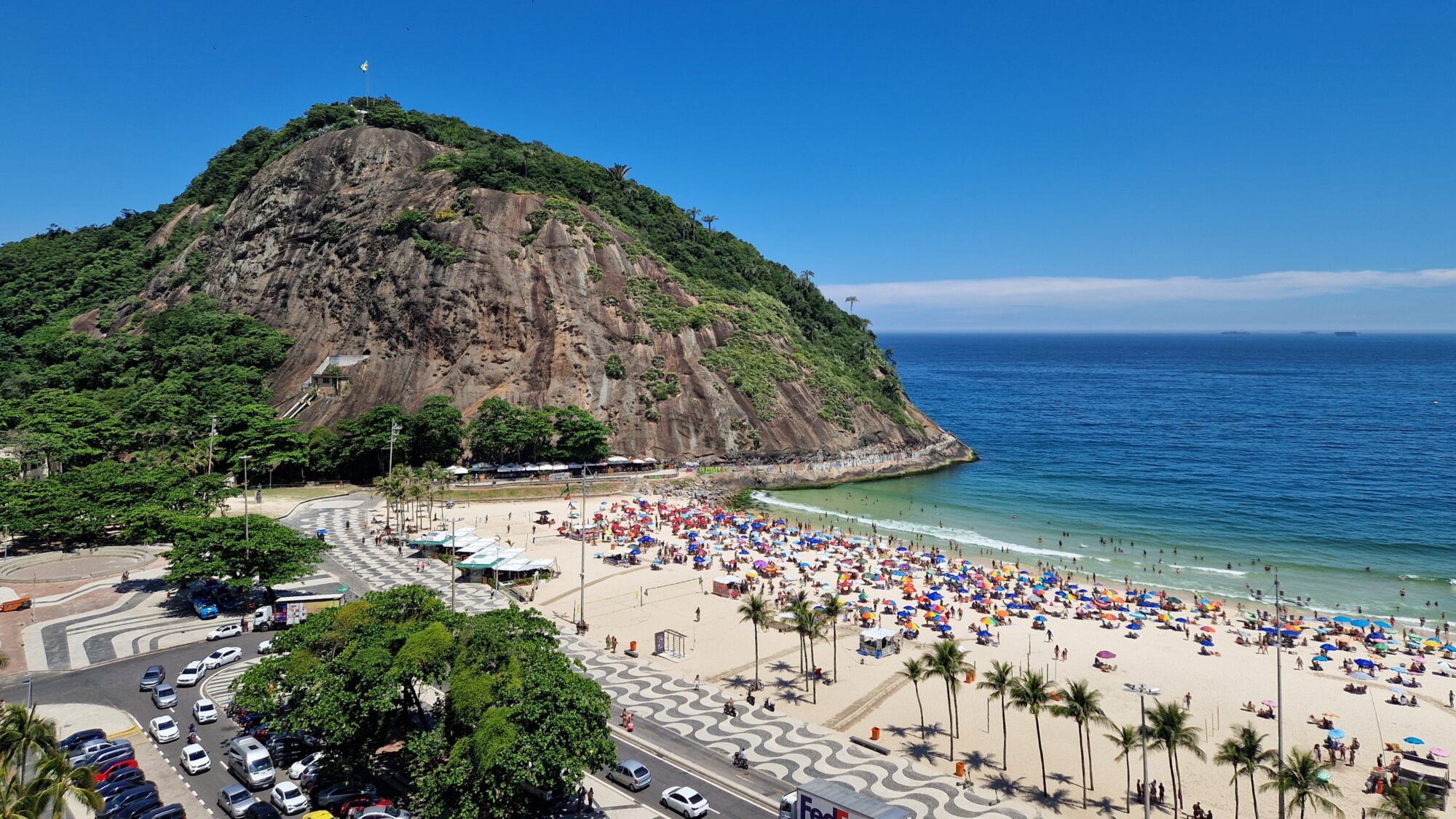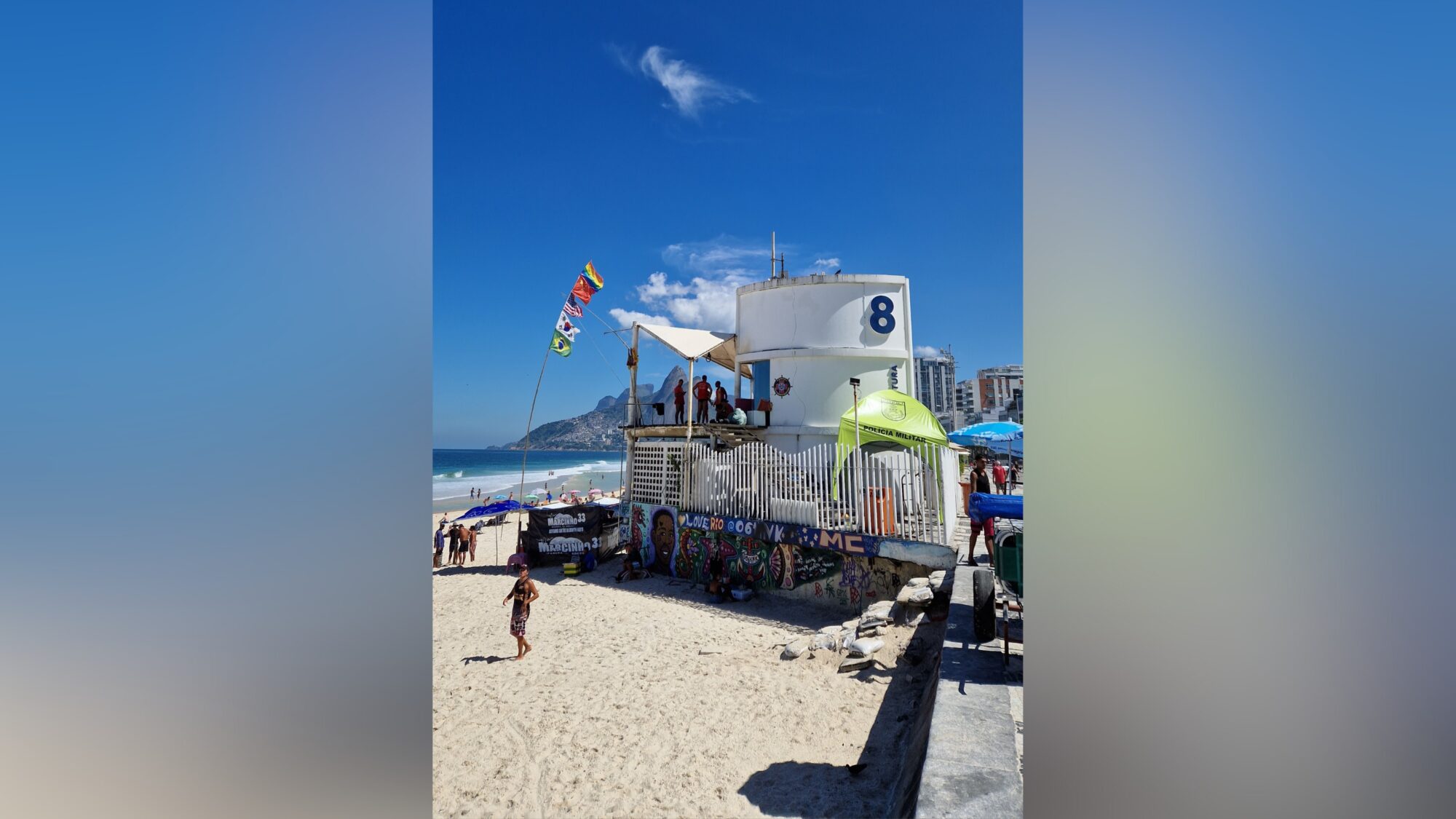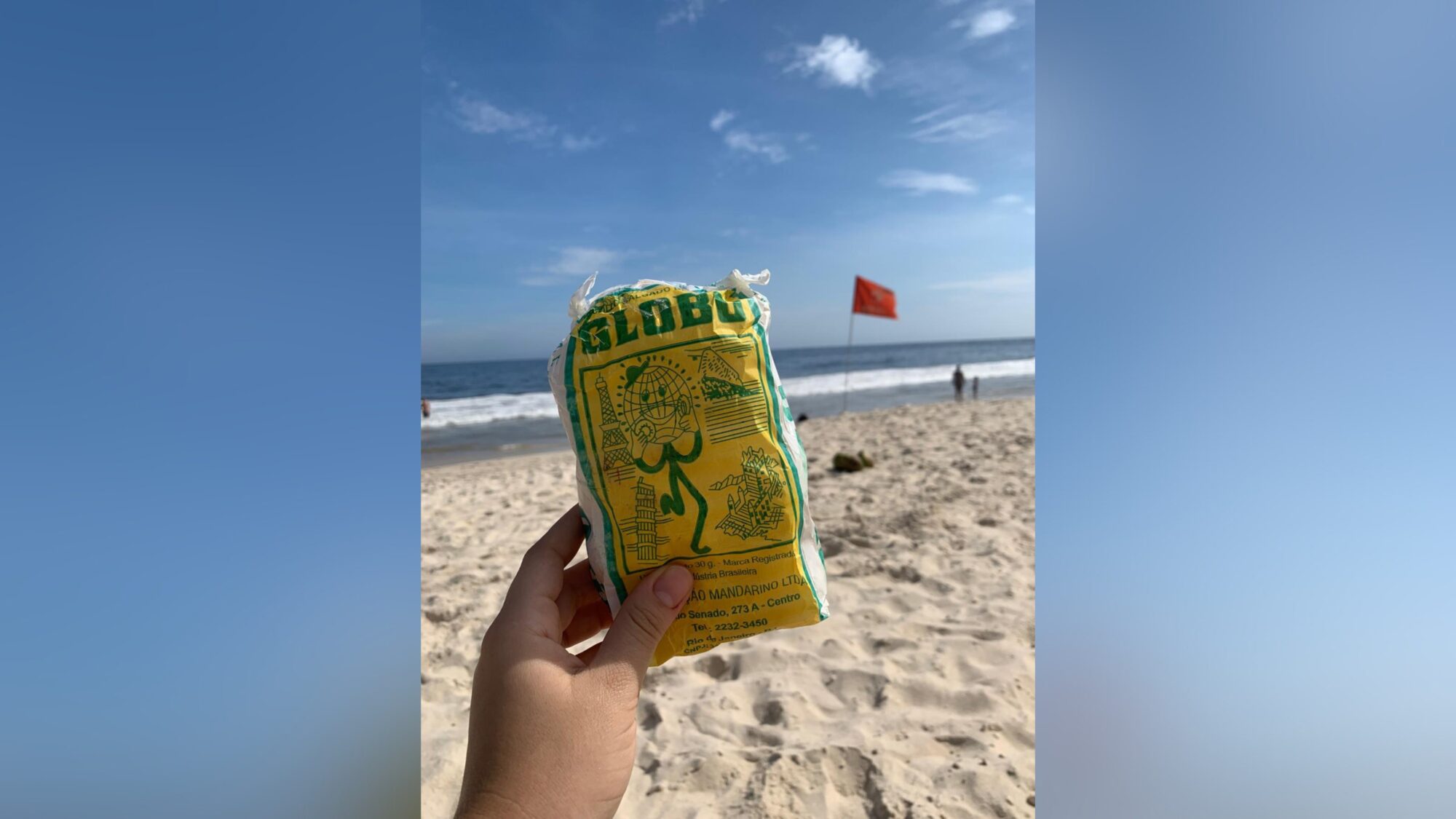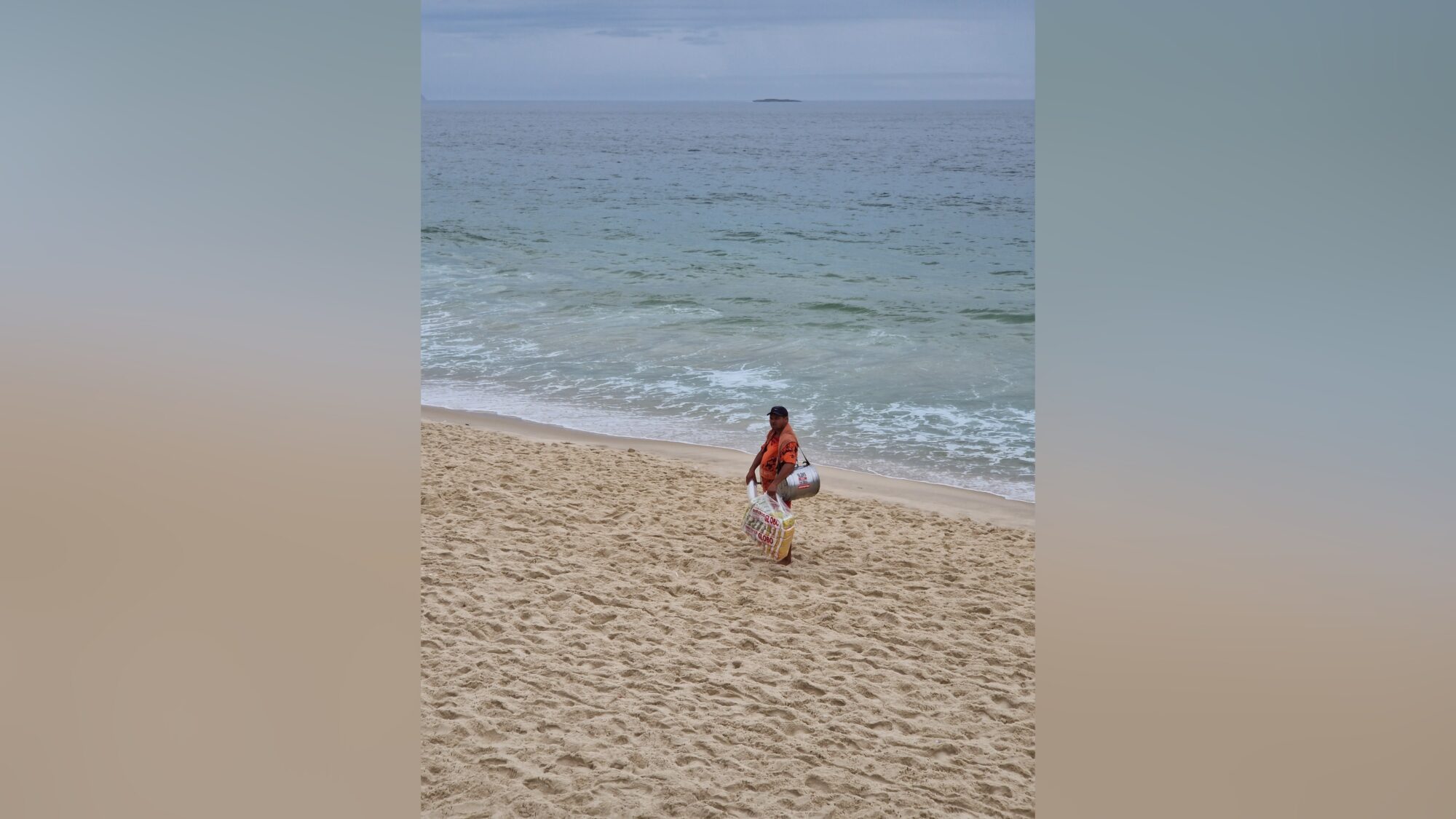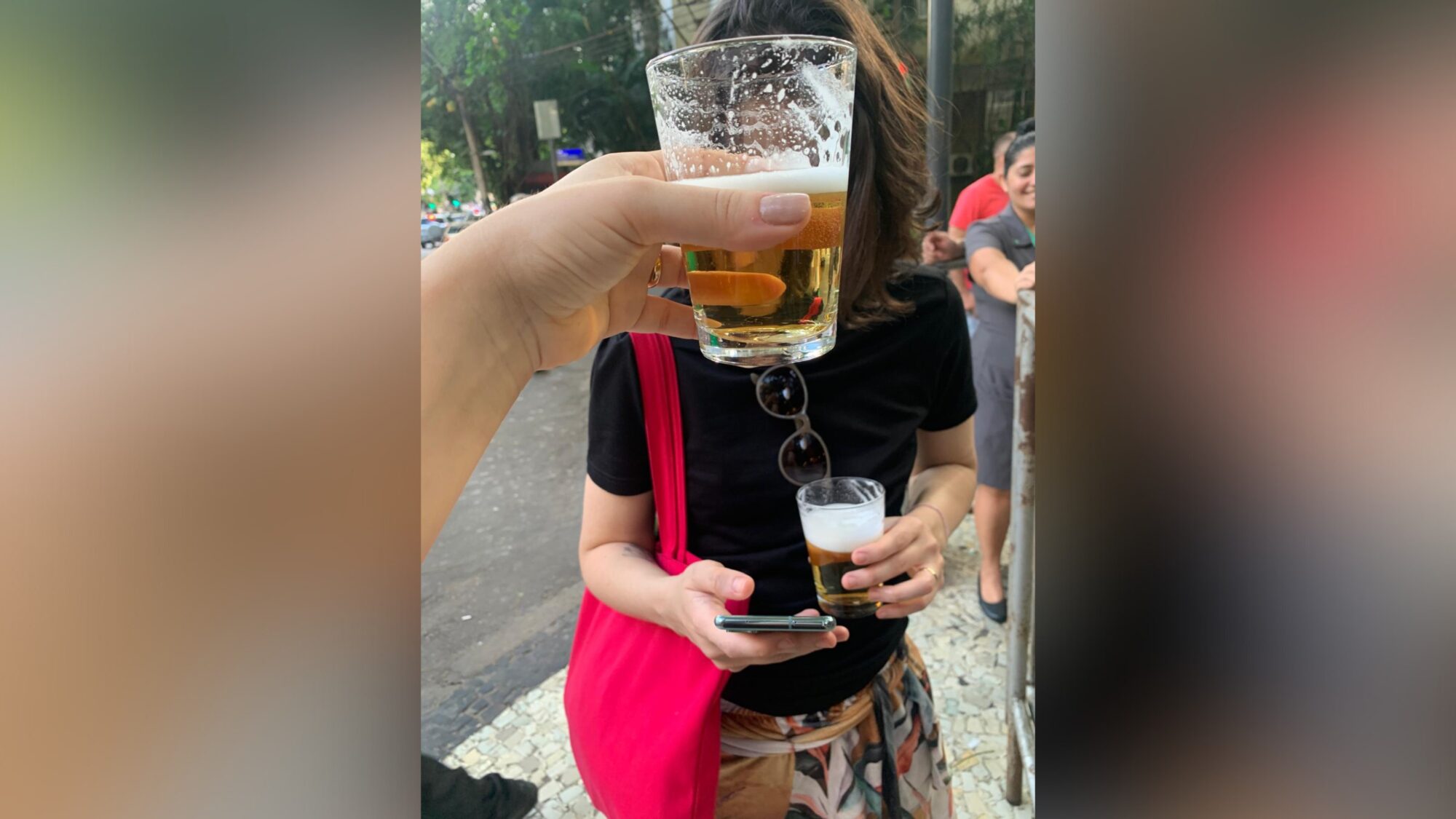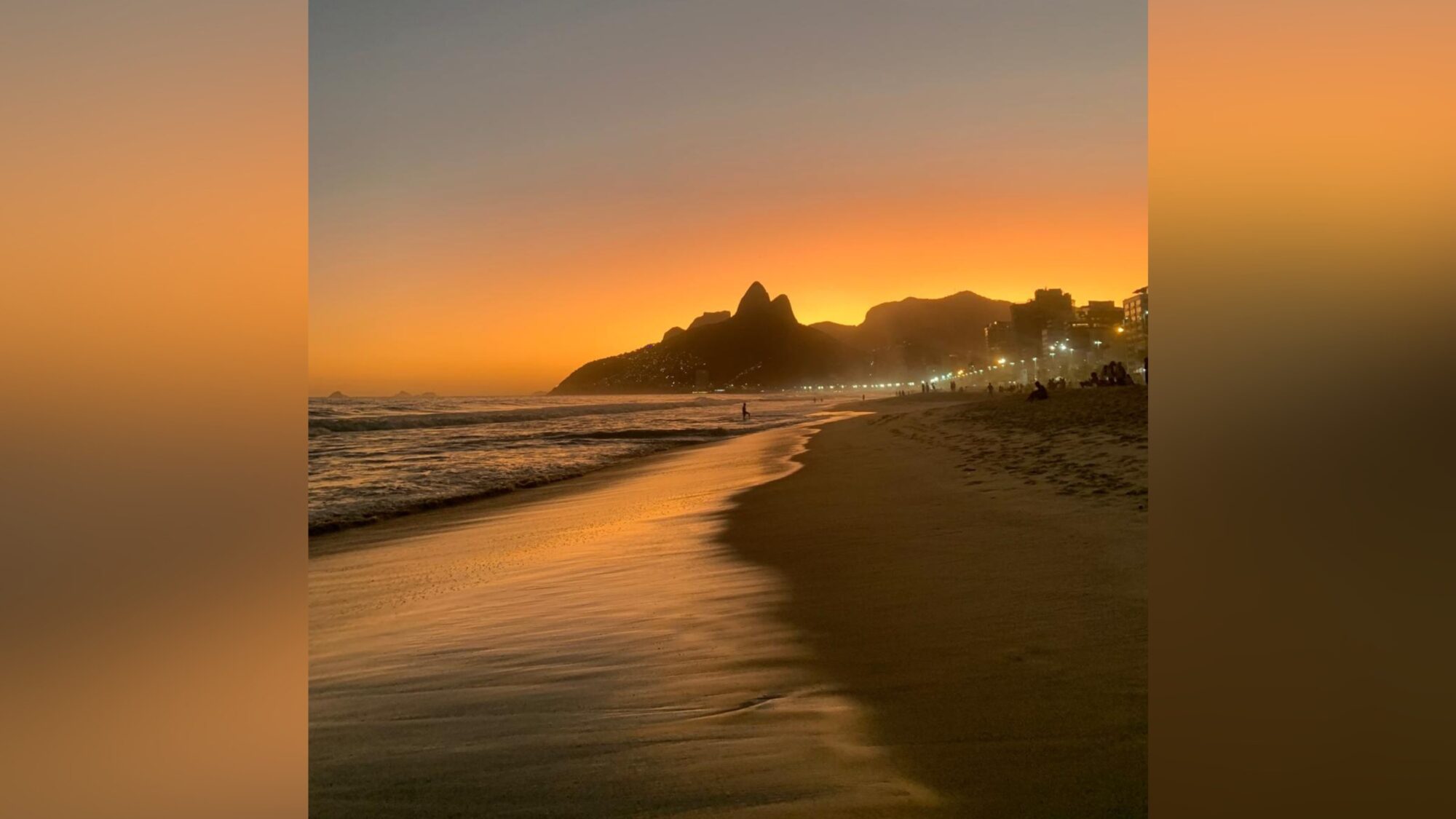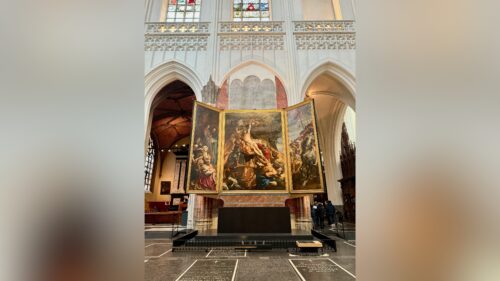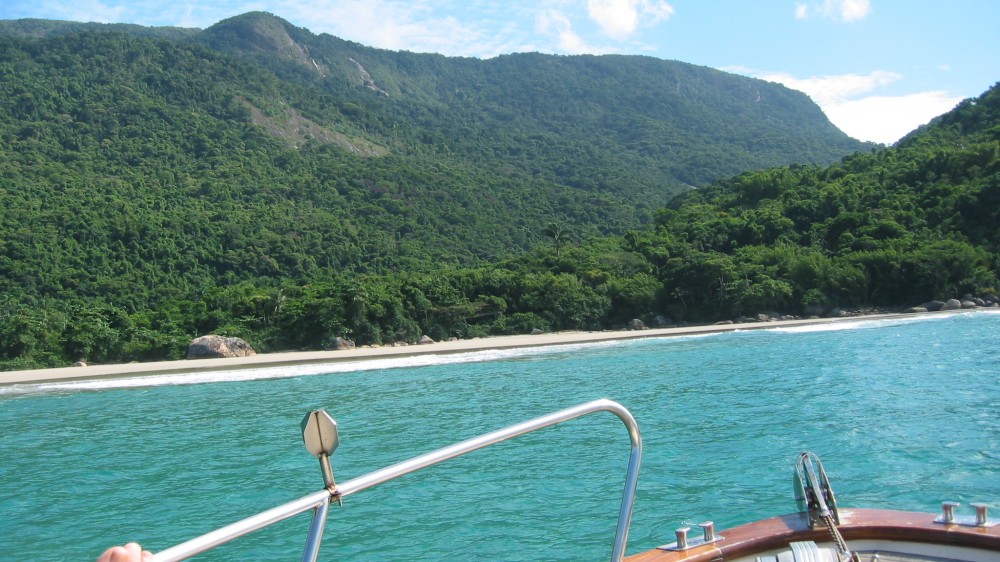Reading the Signs in Rio
Cariocas like the Carioca way of living. So the last thing you want to do in Rio is look like a gringo, or seem lost in the multitude of social interactions and signs so particular to this city. You’ll want to mingle and feel part of it, sure that Cariocas will be very welcoming and start calling you brother (which is genderless here) or my friend at any moment. So here is the ultimate SAP button to help you navigate Rio de Janeiro (almost) like a local:
Havaianas: The Japanese-inspired sandals are the ultimate Carioca footwear, which is so essential to the locals that they’re sold in drugstores and supermarkets. And fear not: in Rio, you are allowed to go (almost!) anywhere wearing them. Dive deeper here.
Feira: Street markets are called “feira” in Brazil. Fey-rah. Each neighborhood has its own, on a particular day of the week. A symphony of colours, sounds, and tastes. Go for a tapioca, a freshly squeezed juice, or coconut water. Or just go to watch the locals. If visiting the Botanical Garden on a Saturday, you might want to drop by Frei Fernando Street, the one with Saulo’s flower shop on the corner. On Sundays, you don’t want to miss out on Feira da Glória, where you can shop, eat, and listen to samba raíz.
Brahma Chopp: The official draft beer in Rio, served on large trays by waiters in botecos. Com colarinho means with foam, sem colarinho (my pick!) is without it. As you see, the diminutive noun ending –inho crops up everywhere in Brazilian Portuguese; colarinho translates to small collar.
Copo americano: If you are served coffee or beer in a copo americano (an “American glass”), sit back and relax: you are at the right place. This 190ml glass was designed by Nadir Figueredo, the company that started as a typewriter repair shop and entered the glass manufacturing market in the ’40s, skyrocketing with the creation of the copo americano. Despite its name – which comes from the fact the machine used to design it was imported from the US – the copo americano is a National symbol and 100% Brazilian.
Canga: With its origins in Mozambique, where it is called capulana, the canga is another unquestionable symbol of Rio. Here, beach pareos or sarongs are sold on the sidewalks along the beach shore or in any beachwear store. They are light, very colorful, and meant to serve as a beach mat, and a towel, but also as a wearable piece – a skirt or dress depending on your ability to tighten it to your body.
Posto: The beaches in Rio are divided in “Postos”, the blue-numbered lifeguard stations along the coast equipped with paid public restrooms & showers. The count starts from Praia do Leme with Posto 1 and ends in Leblon, with Postos 11 e 12. Between these two, you have Copacabana Beach, the longest one holding Postos 2 to 6, then Arpoador Beach and its easily climbable rock formation on Posto 7, and Ipanema Beach on Postos 8, 9, and 10.
Sun Salutation: Yes, you will cross loads of people doing open-air yoga at Aterro do Flamengo or Lagoa Rodrigo de Freitas on weekends, but the Sun Salutation I am talking about is the one first evocated by journalist Carlos Leonam at Ipanema Beach, on a random summer afternoon sometime between the end of the ’60s and the beginning of the ’70s. That part of the shore was populated with iconic lefty journalists and artists, resistently praising life, friendship, and happiness even in the hardest dictatorship days. As the sun began to set, Leonam started a round of applause, claiming the sun had been good to everyone and should be thanked for it. This later became a publicity piece for a bathing suit TV ad, which consolidated the tradition. If at Arpoador Beach during sunset, stay, join and enjoy the chorus.
Altinha and futevolei: Brazilians in general care for their body, but cariocas go beyond: they eat healthy, exercise, don’t smoke much, and always have their vitamin D levels fully charged. Their skin glows, and you might think they all have sprinkled gold powder before hitting the beach. And while you are there, you will notice courts and players all along the shore. Altinha is a fairly simple sport and the goal is to keep the ball up at all times, never letting it touch the ground. You can use any part of your body but your hands and it’s more an exercise than a competitive sport since you dont really keep score.
Mate com limão & biscoito Globo: The ultimate beach snack duo. Biscoito Globo is a light and crunchy biscuit made out of manioc, while mate is the famous yerba maté, but in Brazil, it is consumed cold and with lime juice. That gives it lots of flavor and a bit of foam, making it super refreshing when you are under the Carioca sun. I could write a whole post on this duo and on their vendors but our colleagues from Culinary Backstreets did a great job on their blog a few years ago – and still very recent and accurate.
PF: Stands for Prato Feito which means it’s a set meal, kind of equivalent to a daily special, and is available for lunch on all botecos and in many restaurants as well. In Rio, it is always composed of rice – either white or broccoli rice – black beans, fries or chips (called Portuguese potatoes), and an option of beef, chicken, or fish. This is not exclusive to Rio and can be found anywhere in Brazil, with a few variances such as having potatoes substituted by plain spaghetti (yes, served with beans still) or an addition of farofa, the culinary pearl of Northern Brazil. In Rio, Bar do Bacana in the Leblon neighborhood is my go-to PF.
Pé sujo: If Rio got under your skin, you are ready to sit down at a pé sujo and have a 600ml beer brought to your table inside a polystyrene or acrylic cover – which is meant to keep it cool for longer. You will be pouring it into your copo americano, of course, and the waiter might be grumpy or might be friendly, it really depends on the day. Pé sujo translates to dirty feet and is what Cariocas call the ugliest, hole on the wall, lowest-quality boteco. Of course, just as anything else in this city, they have their charm!
The showering culture: Brazilians shower. Once, twice, sometimes three times a day. A day. It’s a mix of an abundance of water, humidity & indigenous heritage. So play it cool next time a Brazilian tells you they are showering as soon as possible after a long haul, or before going out for dinner. During summer, with all the heat, you might become a shower addict too.
When in town, be sure you won’t need to look for any of these signs. They will be there, waving at you like a bossa nova note.
